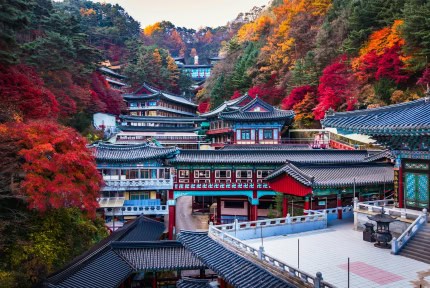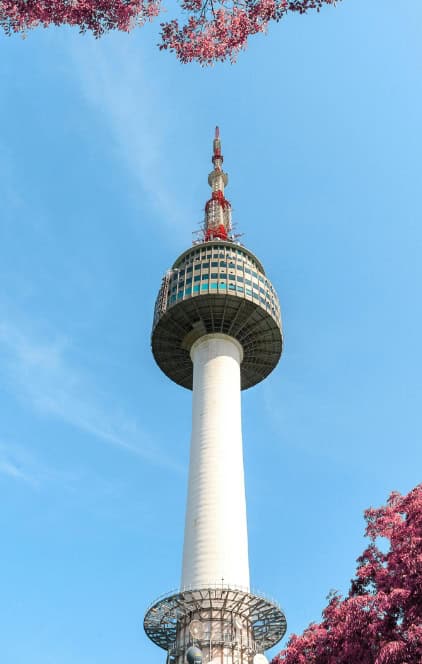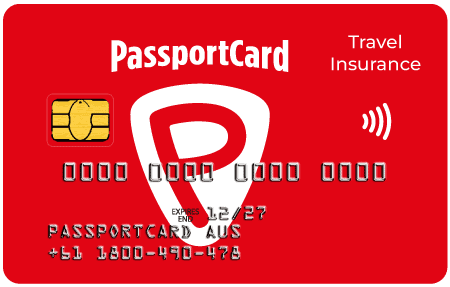

South Korea Travel Guide
If you’re looking to immerse yourself in a totally different culture and environment, there are few better places to visit than South Korea. With its vibrant cities, rich cultural heritage, historic temples and palaces, traditional villages and beautiful natural scenery, there’s so much to love about this unique corner of the globe.
In this guide, we’ll bring you up to speed on what you need to know about visiting South Korea to help you can plan the adventure of a lifetime.
Best ways to experience South Korea
In terms of size, South Korea may be on the more modest size—however, it certainly packs plenty into the space it does have! If you’re a little stuck for ideas on what to include on your South Korean itinerary, here are some favourite destinations and attractions that are well worth visiting.
- Explore Seoul – As the largest and most city location in the nation, no visit to South Korea is complete until you’ve experienced Seoul. Wander through the narrow streets and laneways of Bukchon Hanok Village, dress in hanbok (traditional Korean clothes) while you watch the royal guard changing ceremony at Gyeongbokgung Palace, or sample the street food at the markets like the Gwangjang Market. While here, make sure you also visit Hongdea, where you’ll find numerous themed cafes based around everything from puppies, cats, sheep and meerkats to archery, fortune-telling and even Harry Potter!
- Experience the beauty of cherry blossom season – Japan isn’t the only place where you can witness the beautiful pink and white displays of cherry blossom season. If you’re visiting South Korea around mid-March or early April, visit iconic spots like Jinhae, Gyeongbokgung Palace and Yeouido Hangang Park to capture the beauty of this fleeting yet enchanting season.
- Visit the DMZ – Serving as a buffer between North and South Korea, a visit to the Demilitarised Zone (DMZ) is an insightful experience that provides a stark reminder of the complex and tense relationship between the two Koreas since the Korean War. Explore iconic sites like the Joint Security Area (JSA), where North and South Korean soldiers stand face to face, and the Third Infiltration Tunnel, a tunnel dug by North Korea beneath the border.
- Take some time out in Jeju-do – Known as the “Island of the Gods,” the volcanic island of Jeju-do boasts some seriously stunning landscapes, including volcanic craters, waterfalls and the iconic Hallasan Mountain. Visit picturesque beaches like Jungmun Saekdal Beach, explore the scenic Manjanggul Cave, marvel at the majestic Seongsan Ilchulbong Peak or simply put your feet up at one of its many luxurious beach resorts.
- Discover another side of South Korea in Busan – As South Korea’s second-largest city, Busan serves up a dynamic blend of modernity, cultural richness and scenic beauty. With its modern city skyline that coexists harmoniously with historic temples like Beomeosa and the picturesque Gamcheon Culture Village, make sure you take in its vibrant markets like the Jagalchi Fish Market where visitors can savour fresh seafood, and the bustling Bupyeong Kkangtong Market which is known for its local delicacies.
Visiting South Korea
South Korea has a vibrant arts scene, ranging from classical music and dance to contemporary K-pop and cinema. The cuisine, famous for its bold flavours and diverse dishes like kimchi and bulgogi, is an integral part of Korean identity. The country is also widely acknowledged for its technological advancements and cutting-edge innovation.
South Koreans also celebrate numerous holidays and festivals throughout the year including Seollal (Lunar New Year), Chuseok (Korean Thanksgiving) and Seokga Tansinil (Buddha’s Birthday), which while interesting, can pose some difficulties for tourists visiting during these times due to increased crowds, closures and transportation challenges.
While visiting, doing simple things such as bowing when greeting someone, offering and receiving items with both hands and removing shoes when entering someone’s home are all great ways to show respect. Tipping is not customary in South Korea.
Getting around
South Koreas transportation infrastructure is well-developed, with plenty of efficient ways to get around.
The subway systems in major cities like Seoul and Busan are extensive, easy to navigate and will connect you to key attractions. Buses, both intra-city and inter-city, are another cost-effective and efficient mode of transportation. Taxis are also readily available and reasonably priced, especially for shorter distances.
To explore more remote areas of South Korea, high-speed trains (KTX) connect major cities, making long-distance travel convenient. Alternatively, renting a car is another option that offers greater flexibility.
Accommodation
You’ll have a variety of accommodation options to choose from in South Korea including hotels, resorts, private rentals, guesthouses and hostels. For a more authentic Korean experience, you could organise to stay in a Hanok (a traditional Korean house) or even arrange an overnight temple stay!
The cost of accommodation in South Korea can vary depending on factors such as location, time of travel, type of accommodation and the level of amenities provided, so do some research to find the most suitable option for you.
Entry requirements
Australian tourists can visit South Korea for up to 90 days without needing a visa, however, you must obtain a Korea Electronic Travel Authorisation (K-ETA) prior to travelling to South Korea.
It’s always a good idea to visit the Australian government’s Smartraveller website or contact your nearest South Korean embassy or consulate before your trip for the latest information and updates about travelling to South Korea.
All benefits and covers are subject to the terms, conditions, limitations and exclusions listed in the Combined Financial Services Guide and Product Disclosure Statement (PDS) and on other policy documentation, including the schedule.
Please refer to the relevant PDS before purchasing our travel insurance to understand what is, and is not, covered by the policy to ensure it is the right cover for you.
South Korea travel insurance FAQs
It’s always a good idea to get travel insurance when travelling to South Korea, so you know you’re prepared if something doesn’t go to plan. From medical emergencies to lost luggage, travel insurance can come in handy in a variety of situations. Choosing cover that also offers instant claims can also be invaluable while travelling abroad.
The best way to find out how much it will cost to get cover to travel to South Korea is to get an instant quote with PassportCard. It only takes a couple of minutes to get a personalised quote by providing some basic details such as your age, destination/s, travel dates and the level of cover you would like.
No. Many Australians don’t realise that they won’t be covered by Medicare when overseas. Purchasing travel insurance with cover for medical emergencies and evacuation is essential to ensure you won’t be left to foot the bill if you become seriously sick or injured while travelling.
Simply call our Global Assistance team on +61 1800 490 478 or contact us on WhatsApp. Our Australian-based Global Assistance team is available 24/7 and can quickly handle most common claims on-the-spot over the phone.
Preparing for your trip to South Korea
All set for your trip to South Korea?
Here are some helpful tips to ensure your trip is as enjoyable as possible:
- Check your passport is valid with at least 6 months of validity left from the date you plan to depart South Korea
- Ensure you meet the visitor entry requirements for South Korea
- Speak to your doctor to check if you’ll need any vaccinations before travelling to South Korea
- Notify your financial institution of your plans to travel
- Arrange a travel currency card or another method of payment to cover expenses while you’re away. It’s also a good idea to take some South Korean Won (KRW) with you as some places may only accept cash payments
- Contact your phone provider to ensure your phone plan will cover you while you’re away or purchase a pre-paid international sim card
- Arrange your accommodation in advance for each location you plan to stay in
- Consider booking any trips, tours or activities you want to do in advance, particularly if you will be visiting during peak tourism seasons when things can get quite busy
- Provide details of your travel plans to a family member or close friend not travelling with you so you can be contacted in case of an emergency
- Save the details of how to access emergency consular assistance in case you need it
- Organise your travel insurance with PassportCard.
Get covered for your trip to South Korea with PassportCard



Instant payouts on approved claims with PassportCard
When you choose PassportCard, you’ll enjoy the extra peace of mind of knowing you’ll be able to cover most expenses there and then if something goes wrong.
When you purchase one of our travel insurance policies, we’ll ask you if you’d like a PassportCard to take with you on your trip. If something happens while you’re away (like your luggage is delayed, your cash is stolen or you experience a medical issue), our team can handle your claim quickly over the phone and transfer funds to your PassportCard on-the-spot**.
If approved, you’ll be able to withdraw cash to cover expenses that can arise from things like delayed luggage or stolen cash, or if it’s a medical issue, we can instantly add funds to your PassportCard so you can immediately pay for expenses when you need to.
You won’t need to fill out any paperwork and instant access to funds means you won’t be left out of pocket.
Find out more about how instant claims work or get a quote for your upcoming trip.












